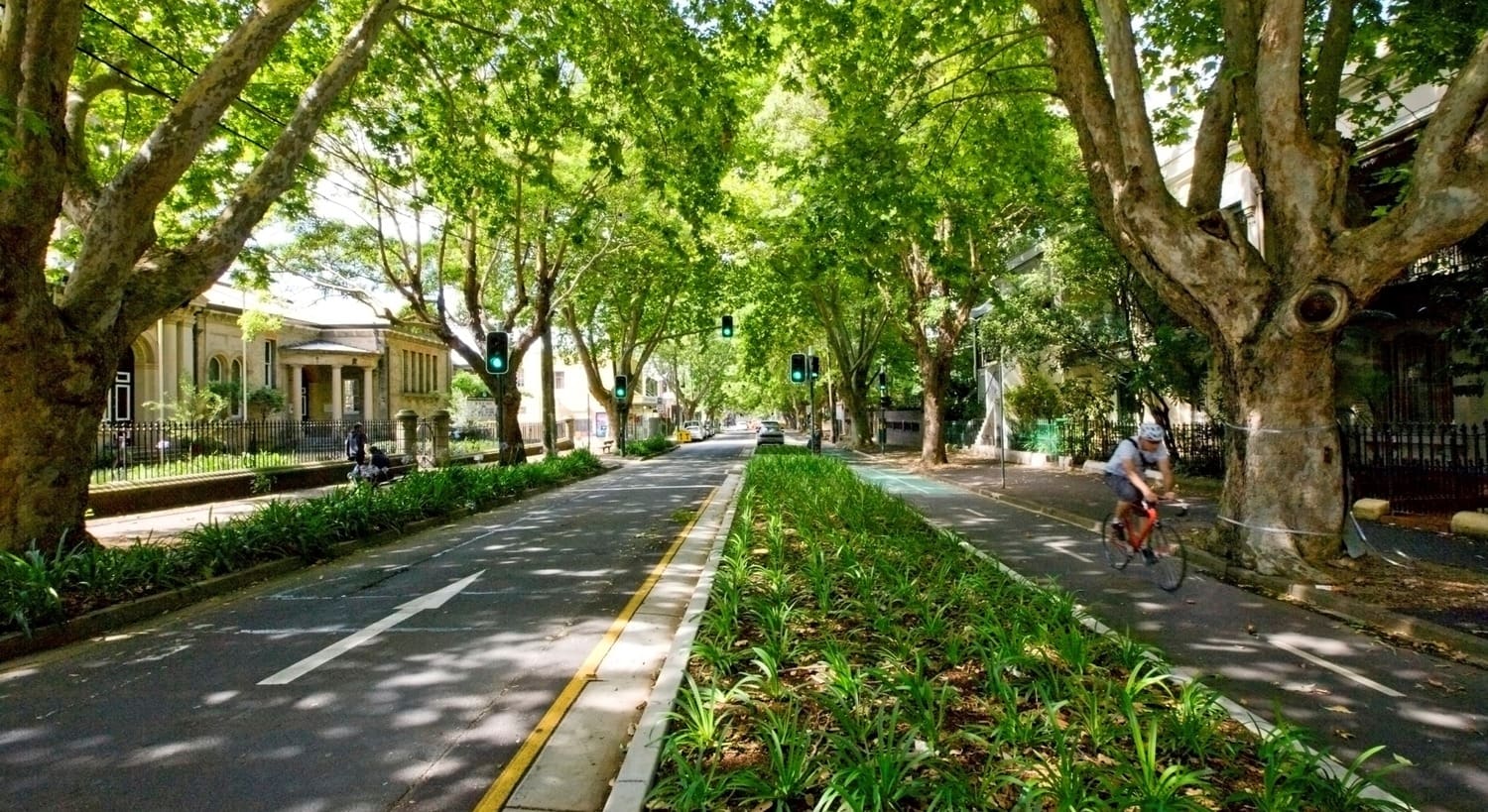Australia’s urban environments are facing significant challenges from climate change and population growth, placing pressure on people, services and environment. Urban forests have the power to restore some balance.
It’s now widely believed that healthy urban forests, small, dedicated green areas given room to grow, can play a a critical role in maintaining the health, biodiversity and liveability of our urban environments.
Over the course of the next generation, as a changing climate results in frequent weather extremes across our cities and towns will experience, an urban heat island effect will intensify, raising temperatures and increasing the importance of shade and cooling from urban forests.
As well as offering a better comfort level for communities in our streets, parks and public spaces, urban forest canopies benefit ecosystems, the economy, and sustain wider health and wellbeing.
As designers we recognise the value these canopies bring, making them an integral part of urban fabric. Whether native, or planted, these forests are seen as a green oasis, and places to aspire to, in contrast the swathes of urban areas devoid of significant tree cover. These days, such areas are judged as providing minimal amenity, and offer limited respite during periods of even moderate temperature increases.
Cultivating green infrastructure
The cultivation and preservation of trees as part of a carefully managed green infrastructure, can transform the character and climate of our streets, parks and public spaces. Unfortunately there remain significant challenges to re-foresting urban environments, including:
- Negotiating tree-cover Utility and local government asset managers don’t always want to accommodate tree cover, as it can impact services, parking, loading zones and vehicle and pedestrian sight-lines.
- Lack of space When every square meter of land is carefully planned for current, and future development, there isn’t always opportunity for extensive tree cover.
- Care and maintenance There can be community reluctance to trees, which can be difficult to maintain, risk damage to property, and can reduce parking space.
- Motivation With calls for more housing, and the demand for more land, many consider creating and preserving extensive tree canopies a luxury we can’t afford.
The way ahead
Progressive Government programs and initiatives are working to increase tree canopy cover. In greater Sydney, the NSW Government is aiming to increase tree canopy cover to 40% while the City of Melbourne’s Urban Forest Strategy elevates the idea at the local level.
As designers we wholeheartedly support such initiatives, and set ourselves the challenge of ensuring the footpaths and high-use public spaces we create are 80% shaded during the height of summer.
To realise these goals, residents, planners, developers and asset and council managers need to get behind them, and it all starts by ensuring they understand the importance of urban canopies in their communities.
The notion of planting trees is a simple one. By demonstrating not just their aesthetic and symbolic worth, but their economic and environmental value, we can inspire more people to champion the benefits of urban canopies.
“Urban and community forestry has transcended its original niche function in public policy as an aesthetic amenity to soften the urban landscape. It is increasingly perceived as a solution to many more pressing urban environmental problems and even as a tool for community and social development.
Environmental benefits are also being quantified more accurately and more often in economic terms. Increasingly communities are realising that green infrastructure is an economical long-term investment that reduces the need for much greater expenditures in grey infrastructure.”
JC Schwab (Ed.), 2009, Planning the Urban Forest

